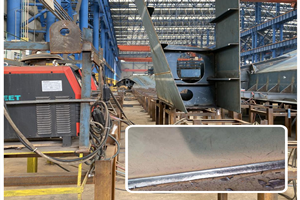Pulse welding is an advanced welding technique that has gained popularity in various industries due to its precision and efficiency. This guide will explore the functionality of pulse welders, their pros and cons, and provide expert insights to help you make informed decisions for your welding projects.

I. How Pulse Welding Machines Work
Pulse welding machines utilize pulse current, alternating between peak and base currents, to achieve controlled droplet transfer. This process minimizes spatter and ensures deep penetration, making it ideal for thin workpieces and high-strength welds.
Key Components of Pulse Welders:
Digital Control System: Enables precise adjustment of pulse parameters, including pulse frequency and duration.
High-Frequency Inverter: Provides stable and efficient power supply, ensuring consistent arc performance.
Advanced Cooling System: Prevents overheating during high-duty-cycle operations.
II. Advantages of Pulse Welding
1. Superior Arc Stability and Control
The pulse current ensures consistent arc stability, leading to uniform weld quality.
Adjustable pulse parameters allow customization based on material thickness and welding position.
2. Minimal Heat Input and Reduced Distortion
3. High Efficiency and Productivity
4. Low Spatter and Clean Welds
5. Enhanced Corrosion Resistance
III. Disadvantages of Pulse Welding
1. Higher Equipment Costs
Pulse welding machines require advanced inverter and digital control technology, increasing initial investment.
2. Steep Learning Curve
Operators need specialized skills to adjust pulse parameters effectively, requiring extensive training.
3. Sensitivity to Environmental Factors
Pulse welding machines are susceptible to power fluctuations, temperature changes, and electromagnetic interference, which can affect performance.
IV. Applications of Pulse Welding
Pulse welding is versatile and widely used across various industries due to its precision and efficiency. Some of the most common applications include:
Automotive Industry: Ideal for welding thin components and complex geometries, such as car body panels and fuel tanks.
Steel Construction: Provides deep penetration and strong welds for structural steel, ensuring durability and safety.
Aerospace: Ensures precision and quality in welding critical aircraft components, such as engine parts and lightweight structures.
Shipbuilding: Suitable for all-position welding with minimal distortion, making it ideal for large-scale marine applications.
VI. Why Choose Megmeet Welding Technology?
Megmeet Welding Technology is a leading manufacturer of industrial welding equipment, offering cutting-edge pulse welding solutions designed to meet the demands of modern welding applications. With over 20 years of experience, Megmeet provides:
Advanced Digital Control Systems: These are for precise parameter adjustments and consistent weld quality.
High-Frequency Inverter Technology: For energy efficiency and reduced operational costs.
Robust and Portable Machines: These are designed for durability and versatility in various work environments.
Customized Welding Solutions: These are tailored to meet the specific needs of your industry, from automotive to shipbuilding.
For more, explore Megmeet's Pulse Welding Machines.
VII. Future Trends in Pulse Welding Technology
Smart Welding Systems: Integration of AI and IoT for real-time parameter optimization and predictive maintenance.
Increased Energy Efficiency: Development of eco-friendly machines with higher energy recovery systems.
Modular Design: Customizable machines tailored to specific industry needs.
Enhanced Operator Safety: Improved safety features and smart PPE integration.
Conclusion
Pulse welding offers significant advantages over traditional welding methods, including superior control, minimal heat input, and high efficiency. Despite higher initial costs and operational challenges, the benefits of pulse welding make it a valuable investment for industries seeking high-quality welds. By understanding the pros and cons of pulse welding, you can make informed decisions to enhance your welding operations.
Megmeet Welding Technology stands at the forefront of this innovation, providing advanced pulse welding solutions that meet the evolving needs of modern welding applications. Whether you're working on a small-scale project or an industrial application, Megmeet’s expertise and cutting-edge equipment ensure unmatched quality and precision.
For more information about the pulse function of welding machines and pulse welding, you can visit the official website of Shenzhen Megmeet Welding Technology Co., Ltd.
Related articles:
1. Pulsed Welding Technology: Solution to Sheet Metal Burn-Through
2. Pulse Technology’s Role in Enhancing Efficiency and Precision
3. Should I TIG with or without pulse?
4. Pulse TIG welding: Process, Automation and Control
5. A Comprehensive Guide to Pulse MIG Welding




